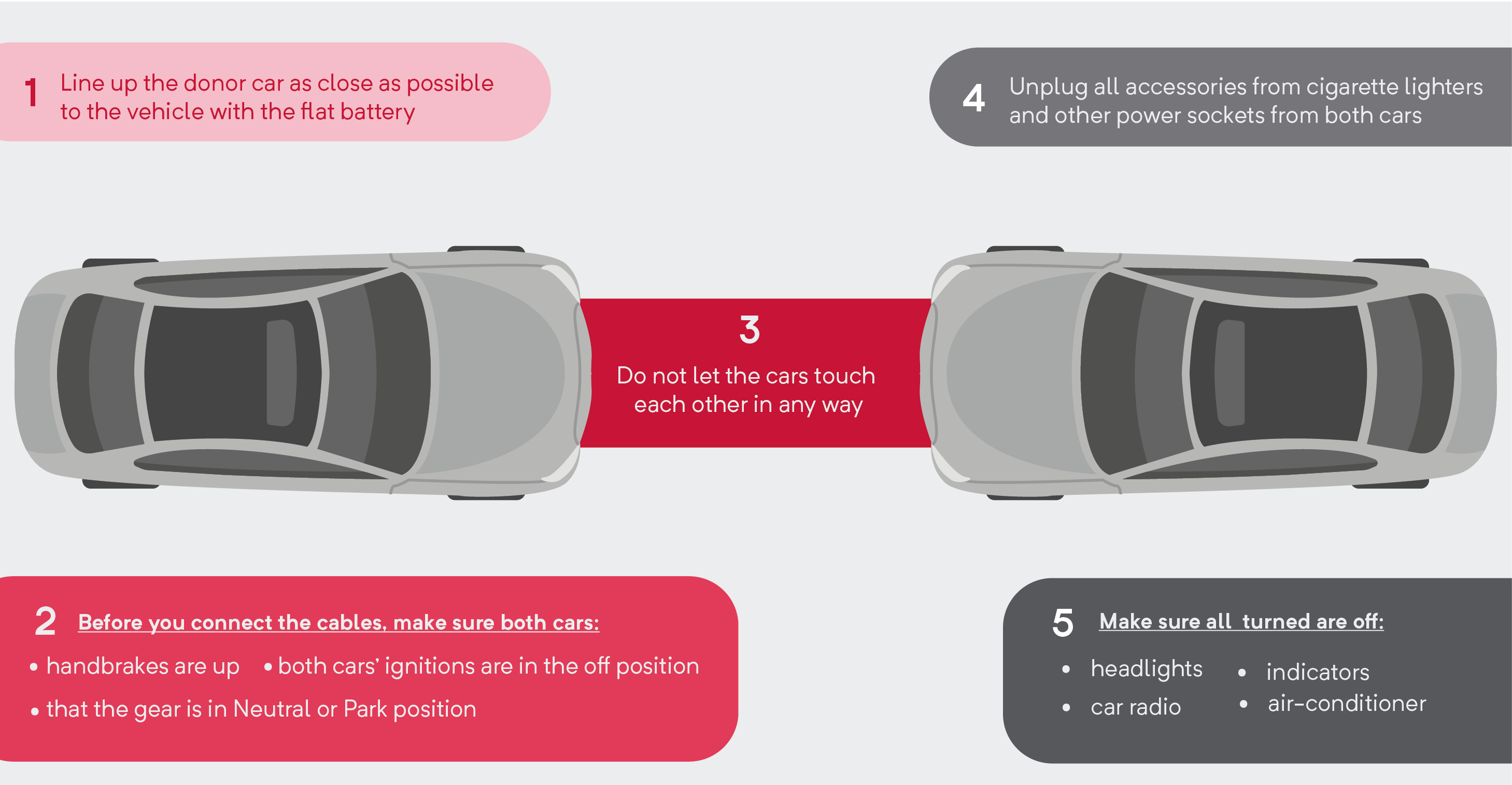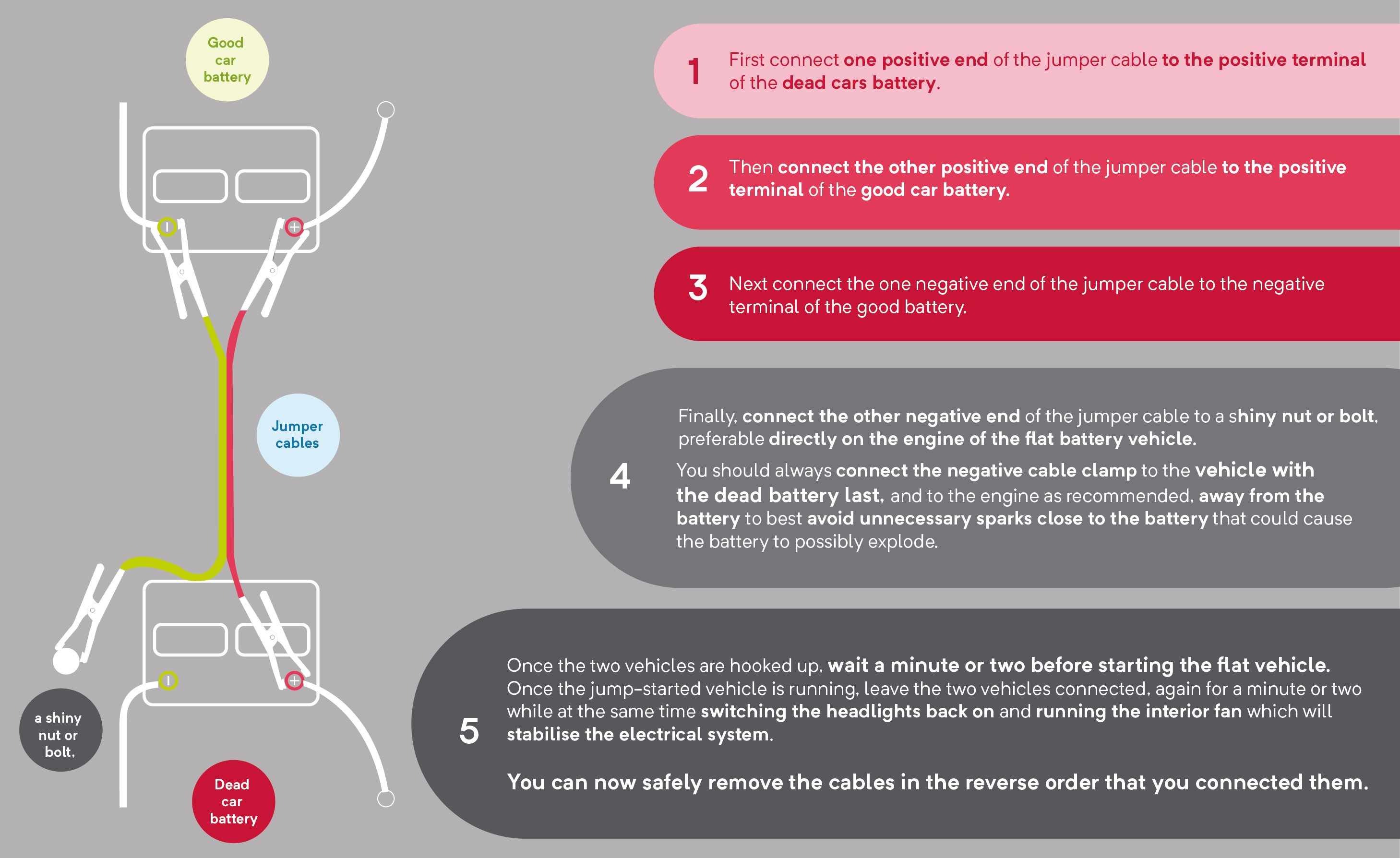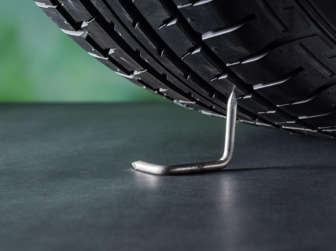While the jump-starting procedure is relatively standard for all vehicles on the road
today, jump / boost starting can cause serious damage to a vehicle’s electrical systems and or computer if done incorrectly.
“It’s important to first consult the owner’s manual for any specific boost starting instructions, as well as to ensure that the different locations are identified for the jump-start terminals in your car, ” advises Dewald Ranft, Chairman of the Motor Industry Workshop Association (MIWA), a proud association of the Retail Motor Industry Organisation (RMI).
In many modern cars these terminals are placed at strategic areas of the vehicle due to the battery being fitted in awkward locations. Once you find the terminals, follow these steps:

Take some time to familiarise yourself with the Positive (+ RED) and Negative (- BLACK) terminals of both car batteries so you know exactly which one is which. All batteries are clearly marked, so if you can’t find it, it’s probably under caked-on corrosion around the terminals. He suggests wiping off any dust or battery acid corrosion that may have formed over time.
 If your battery is damaged
If your battery is damaged
If the battery is cracked and gas or liquid is leaking out, do not go any further. If you try to jump-start the battery with a crack in it, it could explode from the light sparks that occur as the jumper cable connection is made. This is due to gas that is escaping from within the battery from the crack, not to mention acid that could leak from the battery damaging the paint in your car’s engine bay.
But if all seems well, simply clean off any corrosion around the dead battery terminals and if you have tools, loosen the cables from the battery terminals, clean them off with warm water and Bicarbonate of Soda, sandpaper or file the inners of the cable terminals and the battery terminals until shiny, replace the cable terminals and retighten them. Corroded posts prevent full power from getting in and out of the vehicle battery through the cable terminals.
 How to connect car battery jumper cables
How to connect car battery jumper cables
Now you’re ready to connect the car battery jumper cables. Usually, the Positive
battery cable is red or orange, and the Negative, or ground cable is black – but
always check and double check yourself before connecting the final jumper cable just to be sure.
Remember that the cables must be connected in the correct order for safety reasons. MIWA says to do the following:

“We recommend it is always safer to follow this process by checking the electrical system with an accredited service technician, particularly if you suspect the vehicle battery went flat, not due to it laying idle so long but rather because your vehicle may have something slowly draining power from the vehicle. This could be something like a faulty alarm or tracker system, a glove compartment, boot light or interior light not switching off, or the charging system may need testing to ensure the alternator is charging the battery sufficiently. It may at the end of the day just be time to go and have your battery tested which is common in winter,” Ranft says.
 Get help with jump-starting your car
Get help with jump-starting your car
A Service Plan or a Maintenance Plan through MotorHappy includes roadside assistance and jump-start help. If your vehicle has a flat battery, we will send a contractor to help you jump-start your vehicle.
MotorHappy’s free auto calculators: How much car can you afford?
Mercedes-Maybach GLS SUV: Luxury Maximised


